Followed By a Moon Shadow : A Look at Luminos 9.3
Luminos Fans -
Jupiter has always been one of our favorite viewing targets in the night sky. It's easy to spot even with binoculars, colorful, and ever-changing with its distinctive Great Red Spot. Now the Luminos app brings even more beauty to our simulated Jupiter with the arrival of Galilean moon shadows!
The Lovers of Zeus
The four largest moons of Jupiter—Io, Europa, Ganymede, and Callisto—are named four the famed lovers of the god Zeus, the Greek equivalent of the Roman god Jupiter. They are the only four of Jupiter's 67 moons that cast shadows on the surface of the planet from our vantage point. In order to produce the most accurate shadows, we've enhanced Luminos' precision on the positions of the Galilean moons using the latest published research.
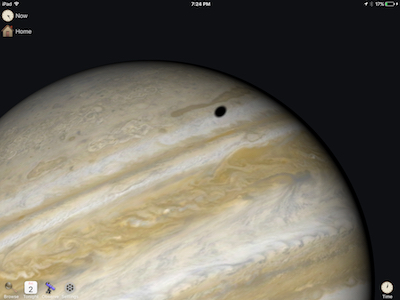
Frequent observers of the Galilean moon shadows will be able to identify which moon is casting a shadow from its appearance alone. For example, Io has a very small and tight shadow due to its proximity to Jupiter, while distant Callisto creates a large, rough-edged shadow. We've modeled the penumbra and umbra in Luminos to reflect this. The shadows will even stretch as they near the edge of the planet's surface!
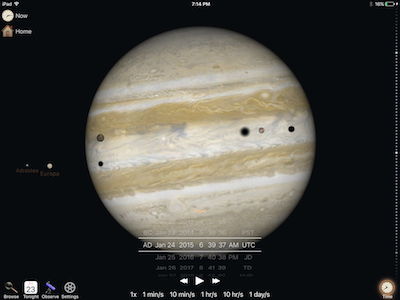
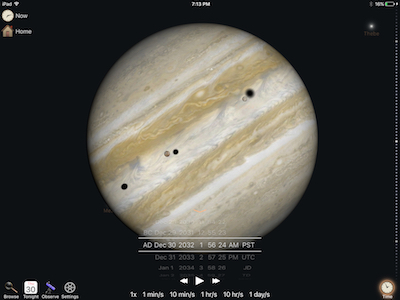
Plan Your Transits
For those of you looking to schedule your night sky observations with Jupiter in mind, you can now see Galilean shadow transits events right in the Luminos browser. A complete list of upcoming events for moon, shadow, and Great Red Spot transits is presented, and the next event to happen will be highlighted for quick access.
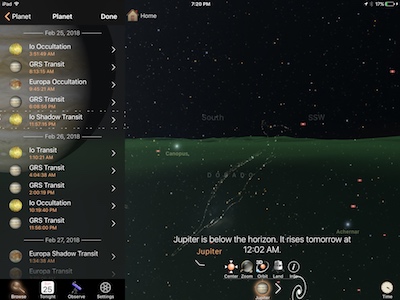
From any event, you can start a simulation by tapping "Set to shadow start" and use the time wheel to watch the progression across the planet.
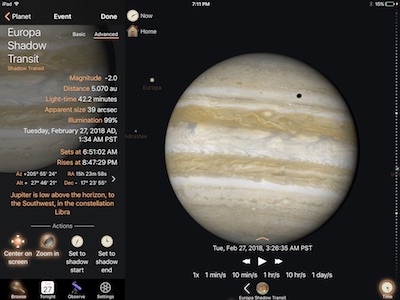
Selective Satellites
There are now more satellite categories to help you customize exactly which objects you see in your Luminos sky view. Fans of the Planet Labs Flock nodes or the new Iridium NEXT initiative can now filter their list specifically for those categories and four others.
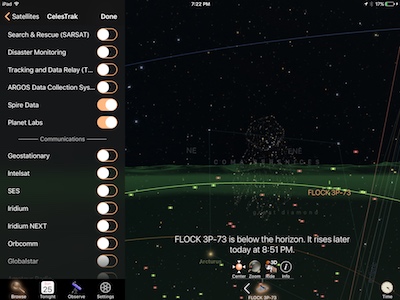
You can choose your categories using the "Celestrak" item under "Space stations and Satellites". After selecting and downloading the data, make sure to check any categories you want to appear in the sky view!
More Observations
As always, we’ve made a few other changes to Luminos that we want you to know about:
- Our Astro-Physics mount driver now supports park positions for the Southern Hemisphere.
- Representations of Earth's moon in the user interface will now have the proper orientation for our friends in the Southern Hemisphere.
- The planetary surface feature database has been updated with the latest designations on Mars and Titan.
We hope you enjoy Luminos 9.3, and we look forward to hearing from you!
Clear skies,
John and Brian